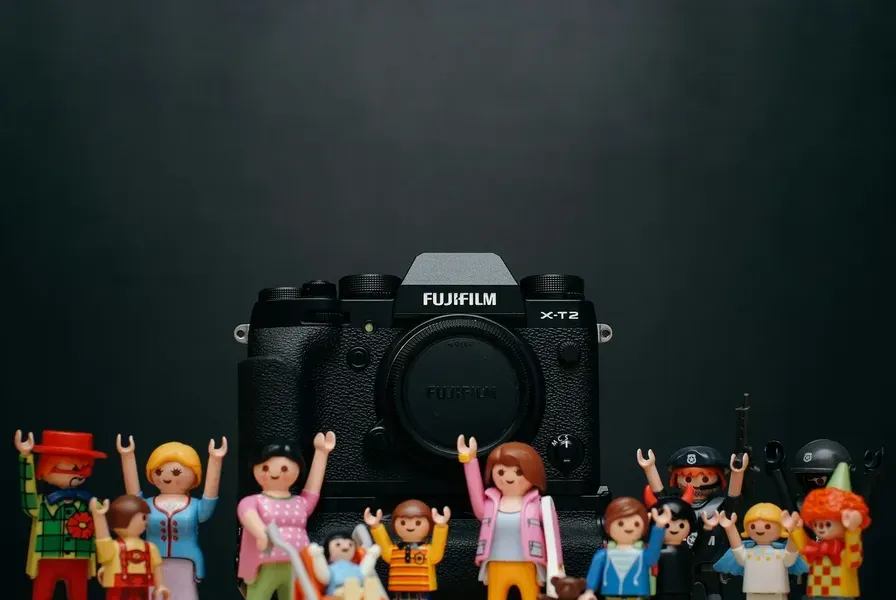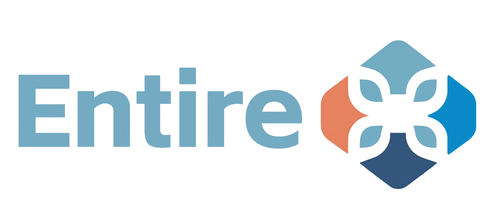Baby Stroller (HS 8715) Tariffs: Exec Guide to Sourcing & Safety Standards

The 2025 US tariffs on Chinese imports are set to impact the baby products sector significantly, particularly for items under HS Code 8715, which covers baby carriages (strollers) and their parts. Executives at leading brands like Graco, UPPAbaby, Bugaboo, and Chicco, who heavily rely on Chinese manufacturing for aluminum and steel frames, durable fabrics like 600D polyester, and complex assembly, must now navigate increased costs and explore alternative sourcing strategies. This Q&A addresses key concerns regarding supply chain diversification, cost implications, and adherence to stringent safety standards such as ASTM F833 (US) and SOR/2016-179 (Canada).
- 1. Strolling Through Statistics: How Reliant is the US on China for Baby Strollers (HS 8715)?
- 2. Pushing Past China: Finding Alternative Hubs for Safe & High-End Stroller Production?
- 3. The Cost of a Smooth Ride: Vietnamese Aluminum Strollers vs. Mexican Molded Ones – How Do They Compare to China?
- 4. Navigating USMCA: Can Mexican or Canadian Stroller Production Meet Origin Rules?
- 5. Wheels in Motion: Logistics of Shipping Strollers – Container Loads vs. Smaller Batches?
- 6. Safety First, Style Second: Beyond ASTM F833 – What Chemical Hazards Lurk in Stroller Materials?
- 7. Frame & Fabric Fortitude: Are Key Stroller Components Prone to Supply Chain Vulnerabilities?
1. Strolling Through Statistics: How Reliant is the US on China for Baby Strollers (HS 8715)?
How reliant is the US market on China for HS 8715 baby strollers, such as Graco travel systems, UPPAbaby Vista series, or Bugaboo Fox models?
The US market exhibits a high dependency on China for HS 8715 products. It's estimated that 70-85% of all baby strollers sold in the US, including popular models from Graco (e.g., Modes Nest Travel System), UPPAbaby (e.g., Vista V2), and Bugaboo (e.g., Fox 5), are manufactured in China. This is due to China's established ecosystem for metal fabrication (aluminum and steel tubing), textile processing (cutting, sewing of durable polyester or nylon fabrics), plastic injection molding, and skilled assembly lines capable of handling complex designs and features like one-hand fold mechanisms and modular seat configurations.
2. Pushing Past China: Finding Alternative Hubs for Safe & High-End Stroller Production?
Beyond China, for high-end strollers like Nuna's MIXX series or Silver Cross's Wave, are there reliable alternative manufacturing hubs in Southeast Asia (e.g., Vietnam, Thailand), Mexico, or Eastern Europe capable of meeting strict safety standards like ASTM F833 and SOR/2016-179?
Yes, alternative hubs are emerging, though with varying capabilities:
* Southeast Asia (Vietnam, Thailand, Malaysia): Vietnam is becoming a notable alternative, with companies investing in facilities for stroller production. They are improving in handling aluminum frame manufacturing and textile work. Thailand and Malaysia also have potential, especially for brands willing to invest in supplier development to meet standards like ASTM F833 (covering structural integrity, stability, parking brakes, restraint systems, and latching/locking mechanisms) and Canada's SOR/2016-179.
* Mexico: Proximity to the US is an advantage for nearshoring. While Mexico has strong general manufacturing, specialized stroller production that meets all juvenile product safety requirements (e.g., no sharp edges/points, secure harness anchorage) needs careful vetting of suppliers like Rassini or Katcon.
* Eastern Europe (Poland, Czech Republic): These countries have a history of quality manufacturing, including for juvenile products. They are well-versed in EU safety standards (e.g., EN 1888), which often have parallels with North American ones. Brands like Cybex (German, but with global production) utilize European facilities. Costs might be higher than in Asia.
3. The Cost of a Smooth Ride: Vietnamese Aluminum Strollers vs. Mexican Molded Ones – How Do They Compare to China?
What are the unit cost differences when sourcing aluminum-frame strollers from Vietnam or assembling injection-molded component strollers in Mexico, compared to similar Chinese products (considering frame materials like 6061 aluminum, fabrics like Oxford cloth, and wheelsets like EVA/rubber tires)?
- Aluminum-Frame Strollers (Vietnam vs. China): Vietnam might initially be +5% to +15% more expensive than China. While labor costs can be competitive, the supply chain for specialized aluminum alloys (e.g., 6061 or 7005 series for strength-to-weight ratio) and high-quality finishing (anodizing, powder coating) is less mature than in China. The cost of durable Oxford fabrics (e.g., 300D or 600D polyester) and reliable EVA or rubber wheels might also be slightly higher.
- Injection-Molded Component Strollers (Mexico vs. China): Mexico could be +10% to +20% more expensive. This depends on the complexity of molds, resin costs (e.g., nylon for structural parts, PP for simpler components), and the extent of assembly required. China benefits from economies of scale in plastic molding for major brands like Goodbaby International (which manufactures for many global brands).
4. Navigating USMCA: Can Mexican or Canadian Stroller Production Meet Origin Rules?
For manufacturing strollers in Mexico or Canada, can USMCA origin rules be met? What are the requirements for imported frames (e.g., high-carbon steel), wheels (e.g., PU tires), or textiles (e.g., water-resistant polyester)?
USMCA origin for strollers (HS 8715) is typically met if the "substantial transformation" (i.e., assembly into the final stroller from various parts and components) occurs in Mexico or Canada.
* Tariff Shift Rules: Generally, if non-North American components (like a steel frame from Asia, PU tires from Taiwan, or polyester fabric from Korea) are transformed into a finished stroller in Mexico/Canada, the product often qualifies for USMCA preferential treatment. The specific rule usually involves a change in tariff classification from the parts to the finished stroller.
* Imported Components: The origin of individual components like frames, wheels, or textiles does not automatically disqualify the finished stroller, provided the assembly and other required processing in Mexico/Canada are significant enough to meet the USMCA rule of origin for HS 8715. There isn't a strict requirement that all sub-components be North American, but using regional components can help if a Regional Value Content (RVC) method is opted for, though tariff shift is more common for such goods.
5. Wheels in Motion: Logistics of Shipping Strollers – Container Loads vs. Smaller Batches?
How do logistics and inventory management differ when transporting a container of folded strollers or stroller-car seat combos from China/Taiwan to the US, versus smaller batch procurement of specific models?
- Container Shipping (China/Taiwan to US): Typically 30-50 days sea transit. Requires large volume orders (e.g., hundreds of units of brands like Baby Trend or Kolcraft strollers) leading to significant upfront capital for inventory, warehousing costs in the US, and higher risks of obsolescence if demand forecasts are inaccurate or models are updated frequently.
- Smaller Batch Procurement (Potentially from closer regions or specialized Chinese factories): Might involve higher per-unit shipping costs (LCL - Less than Container Load, or air freight for urgent needs) but allows for greater flexibility, lower inventory holding, and faster response to market changes. This could be suitable for niche models or newer brands testing the market. However, finding Chinese suppliers willing to do small batches for strollers can be challenging due to their production scaling.
6. Safety First, Style Second: Beyond ASTM F833 – What Chemical Hazards Lurk in Stroller Materials?
When importing strollers, besides ASTM F833 (US) and SOR/2016-179 (Canada) for structural integrity, stability, restraint systems, and small parts, what chemical safety concerns for textiles (flammability, azo dyes), plastic parts (phthalates), and metal components (heavy metals like lead) need attention?
Beyond the critical mechanical safety standards, chemical safety is paramount:
* Textiles (Canopies, Seat Pads, Liners):
* Flammability: Must meet 16 CFR Part 1610 (US) and potentially similar Canadian requirements.
* Azo Dyes: Certain azo dyes that can release carcinogenic amines are restricted in many regions and should be avoided.
* Formaldehyde: Often used in textile finishing; levels should be minimized.
* PFAS (Per-and Polyfluoroalkyl Substances): Used for water/stain resistance; increasing scrutiny and restrictions.
* Plastic Components (Handles, Trays, Harness Buckles):
* Phthalates: Restricted under CPSIA (e.g., DEHP, DBP, BBP, DINP, DIBP, DPENP, DHEXP, DCHP) in children's products.
* Lead Content: All accessible components must meet CPSIA lead limits (90 ppm for surface coatings, 100 ppm for substrates).
* BPA (Bisphenol A): While less common in stroller structural parts, may be found in accessories; many brands opt for BPA-free.
* Metal Components (Frames, Fasteners):
* Lead and other Heavy Metals (e.g., Cadmium, Mercury): Surface coatings and base materials must comply with CPSIA limits.
* Corrosion Resistance: Important for durability, especially for parts exposed to elements.
* Foam Padding: Should comply with state-level flame retardant chemical laws (e.g., California TB 117-2013).
7. Frame & Fabric Fortitude: Are Key Stroller Components Prone to Supply Chain Vulnerabilities?
Are there supply chain vulnerabilities for key stroller components like lightweight high-strength aluminum (e.g., 6005A/7075 series), durable cationic fabrics or eco-friendly recycled fabrics, precision bearings and suspension systems, or secure locking mechanisms?
Yes, several vulnerabilities exist:
* High-Strength Aluminum Alloys (e.g., 6005A, 7075 T6): Supply of these specific alloys, crucial for lightweight yet robust frames (used by brands like Mountain Buggy or Thule), can be concentrated among fewer mills. Price volatility of aluminum also impacts costs.
* Durable & Specialized Fabrics: Cationic dyed polyester (for rich, lasting colors) or certified recycled fabrics (e.g., rPET from brands like Bumbleride) might have limited suppliers who can meet both quality and volume demands. Consistent color matching across batches can also be a challenge.
* Precision Bearings & Suspension Systems: High-quality, sealed bearings for smooth wheel rotation and effective suspension components (springs, elastomers) are often sourced from specialized manufacturers. Disruptions in their supply can impact stroller assembly.
* Secure Locking Mechanisms (for folding, seat adjustment, harness buckles): These are critical safety components. Ensuring reliable suppliers who meet stringent quality control for parts like ITW Nexus buckles or custom-designed folding locks is essential. Any failure can lead to recalls.
* Skilled Labor for Assembly: While seemingly straightforward, the assembly of complex strollers requires trained labor to ensure all parts are correctly fitted and safety features are functional. Shortages or increased labor costs in manufacturing regions can be a vulnerability.
Disclaimer: The information provided in this article is for general informational purposes only and does not constitute financial, legal, or specific sourcing advice. Market conditions are highly dynamic and specific advice should be sought from qualified professionals.




